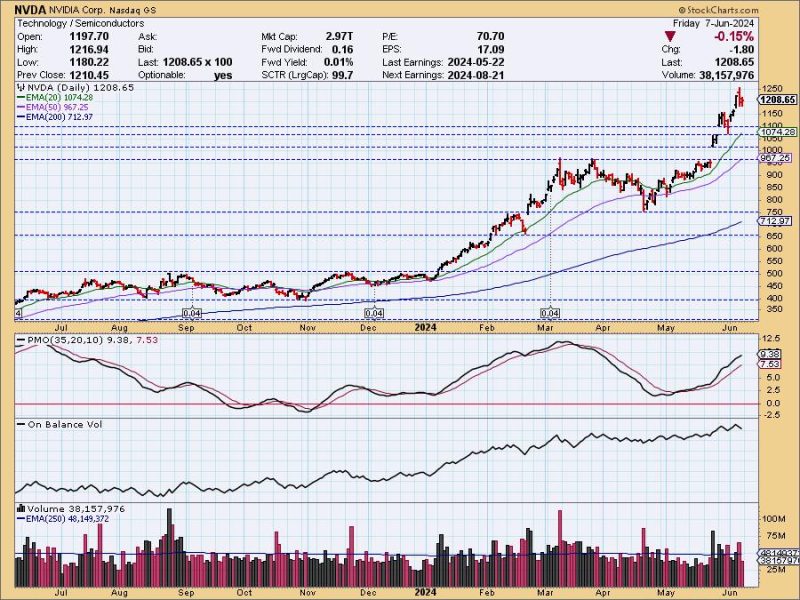Nvidia’s Stock Split and Potential Correction: What Investors Need to Know
Nvidia Corporation, a leading technology company known for its graphics processing units (GPUs) and artificial intelligence technologies, recently announced a stock split, igniting both excitement and speculation among investors. In this article, we will delve into the significance of Nvidia’s stock split and explore the potential for a correction in the company’s stock price.
Stock splits are a common corporate action that involves dividing existing shares into multiple new shares. By increasing the number of outstanding shares, a stock split aims to make shares more accessible to a broader range of investors. In the case of Nvidia, the company announced a 4-for-1 stock split, which means that for every one share owned, shareholders will receive three additional shares.
One of the main motivations behind a stock split is to lower the price of individual shares. A lower share price can make the stock more affordable and appealing to retail investors, potentially increasing trading volume and liquidity. Additionally, a lower share price may make it easier for the stock to be included in popular stock indices, such as the S&P 500, which often have price thresholds for constituent stocks.
While stock splits are generally seen as a positive development and can lead to a short-term boost in the stock price due to increased demand, they do not inherently change the fundamental value of the company. Investors should be cautious of treating a stock split as a strong buy signal without considering other aspects of the company’s financial health and growth prospects.
In the case of Nvidia, the company has been a standout performer in the technology sector, driven by its strong foothold in the gaming, data center, and artificial intelligence markets. Nvidia’s revenue and earnings have seen substantial growth in recent years, supported by increasing demand for its high-performance GPUs and advancements in deep learning and autonomous driving technologies.
However, like any publicly traded company, Nvidia is not immune to market corrections and economic downturns. It is essential for investors to remain vigilant and conduct thorough research before making investment decisions, especially in a volatile sector like technology. While Nvidia’s stock split may have positive implications for its market accessibility and liquidity, it does not guarantee future price appreciation or shield the stock from potential corrections.
In conclusion, Nvidia’s stock split represents a strategic move by the company to enhance shareholder value and attract more investors. While the split may generate short-term excitement and momentum in the stock price, investors should exercise caution and consider all relevant factors before making investment decisions. By staying informed and maintaining a long-term perspective, investors can navigate market fluctuations and make informed choices regarding their Nvidia holdings.
In summary, Nvidia’s stock split is a significant development that has the potential to impact the company’s stock price and market dynamics. Investors should carefully evaluate the implications of the split and consider other factors, such as the company’s financial performance and growth prospects, when making investment decisions. By staying informed and exercising due diligence, investors can navigate the opportunities and challenges presented by Nvidia’s stock split with confidence.

